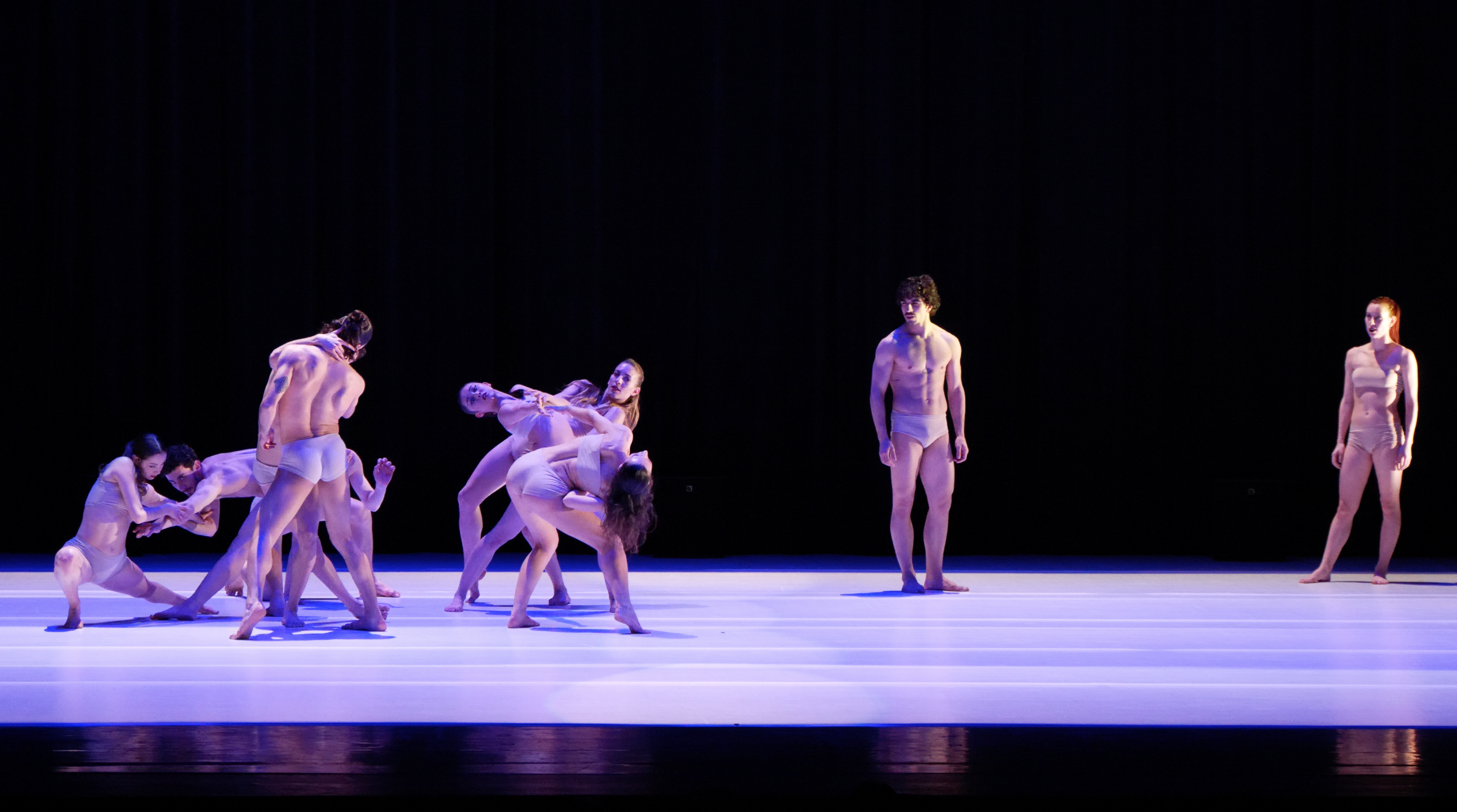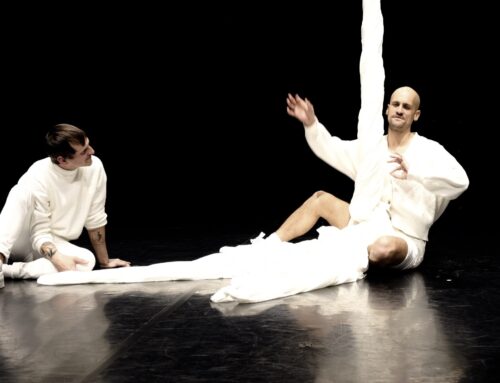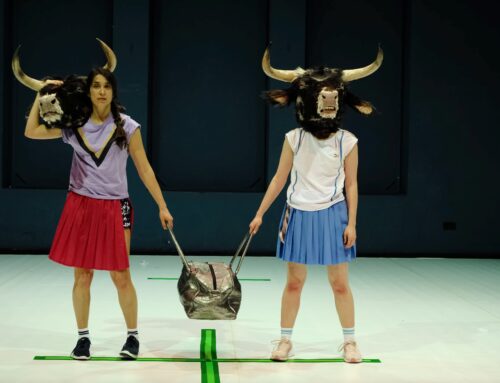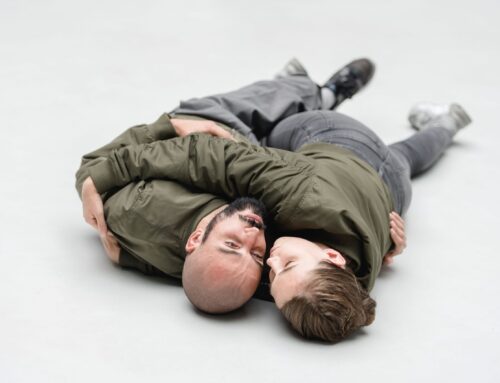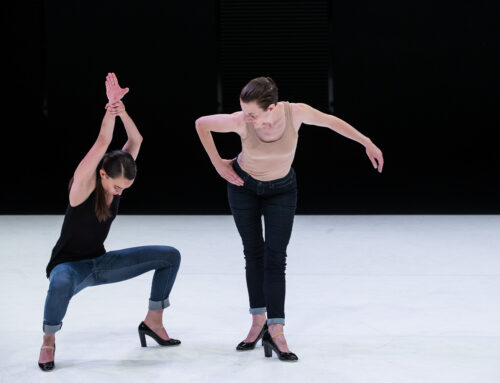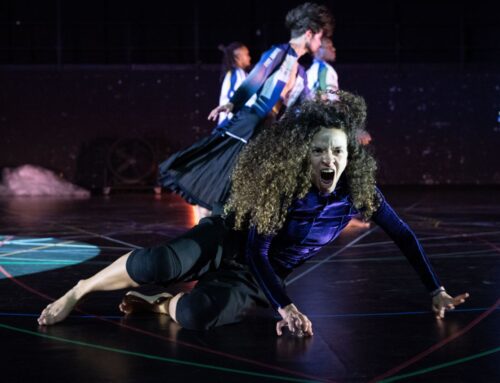Balletto di Roma with Itamar Serussi Sahar’s and Chris Haring’s
„Giselle“
It is already the second evening of “Giselle“ in Heerlen. Only two weeks earlier Dada Masilo’s reinterpretation of the ballet classic delighted the audience of Schrit_tmacher festival, now Balletto di Roma presented this subject at the same place:
nightreview by Laura Brechmann
translation by Karoline Strys
It is already the second evening of “Giselle“ in Heerlen. Only two weeks earlier Dada Masilo’s reinterpretation of the ballet classic delighted the audience of Schrit_tmacher festival. The South African dancer and choreographer who made her own mark internationally in the past few years especially because of her interpretations of classical works. She transfers the tragical romantic matter into a rural area of South Africa. The classic romantic drama gets deeper as Masilo critically interlaces topics like women’s rights and sexuality into the storyline. Nevertheless, a “Giselle“ dances, loves and suffers on stage that night. The plot is recognizable and offers the audience safety – as only thus Masilo’s interwoven criticism may unfold.
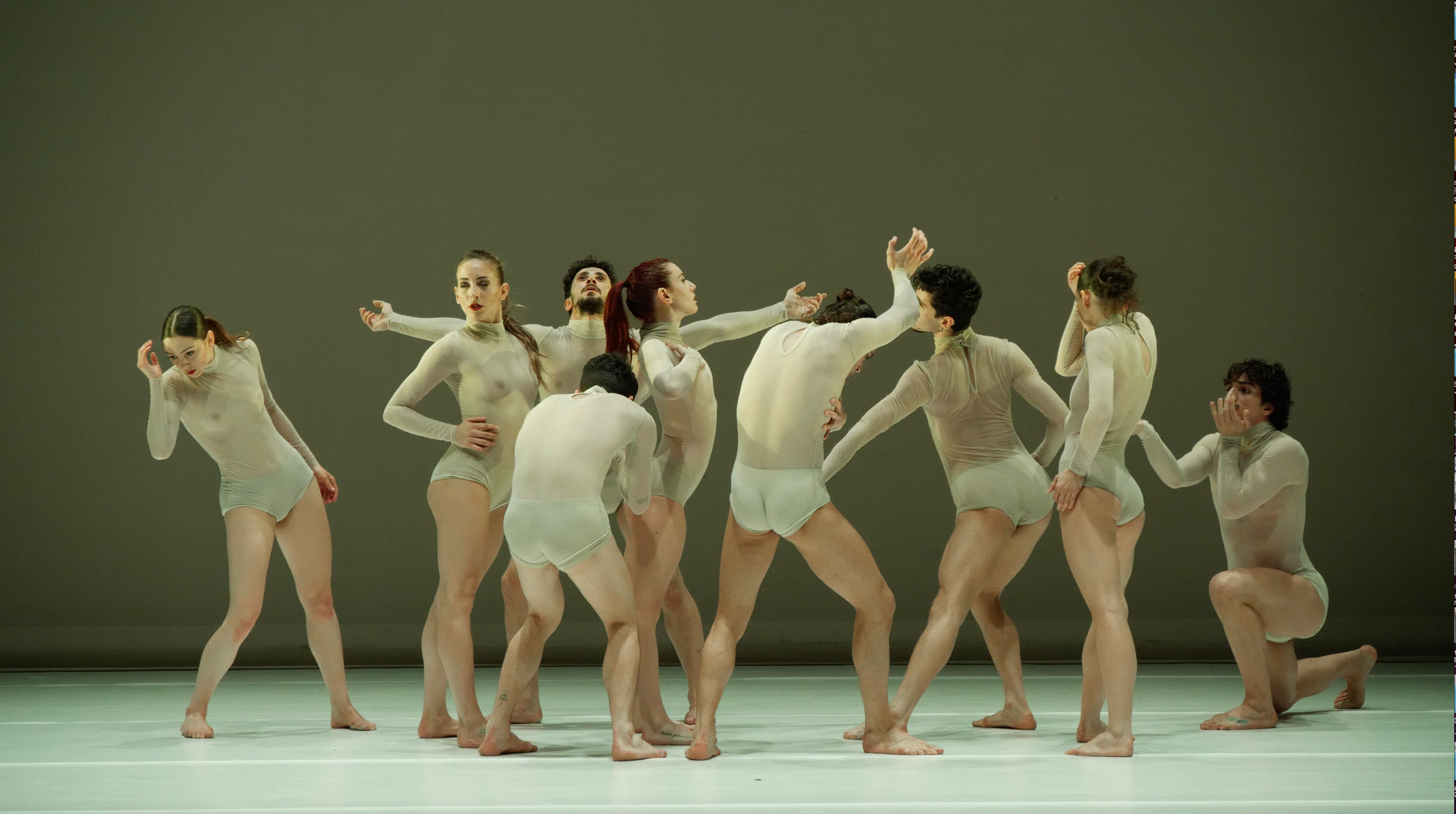
Giselle Balletto die Roma ©Klaus Dilger TANZweb
Tonight, however, something is not quite right. Regarding the evening of Itamar Serussi Sahar (ISR/NL) and Chris Haring (NL), choreographed in collaboration and separately, one cannot properly speak of a new interpretation The dancers of Balleto di Roma do not interpret, transfer, complement “Giselle“ but they dismantle, blend and undress her down to the skin. Comical dance evenings in rural atmosphere, tender caressing of two lovers and momentous seduction by mystic female figures – despite memorability they are relentlessly moving away from the plot. In both the first act, choreographed by Sahar, and the second act, choreographed by Haring, any distribution of roles is set aside completely. No Giselle, no Albrecht, no Hilarion to find on stage, only pure bodies in different constellations dressed in see-through leotards. In their respective artistic language Sahar and Haring focus on the two topics that seem to remain when any narrative, any flourish of the classic is removed: Amore and morte, love and death.
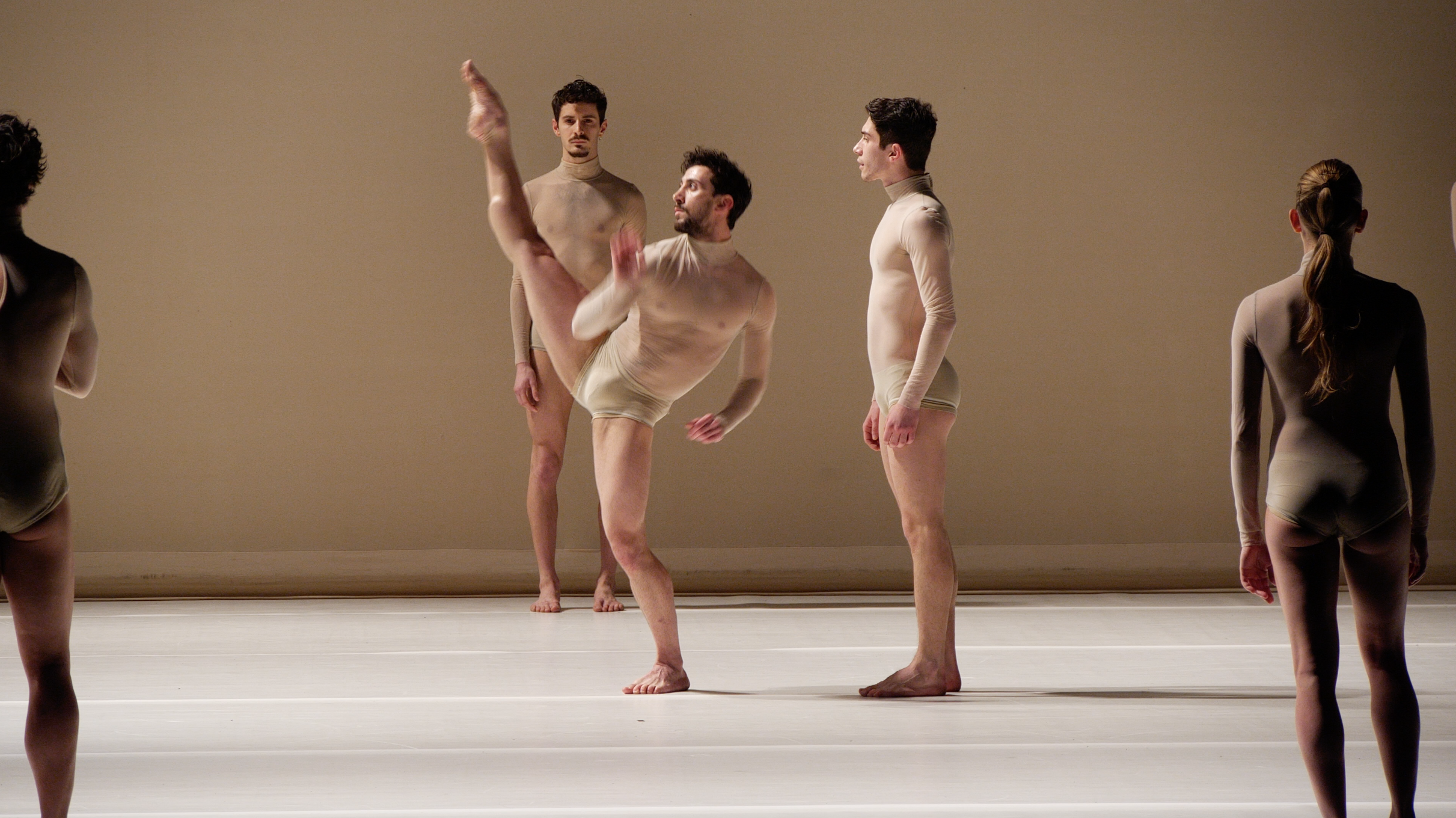
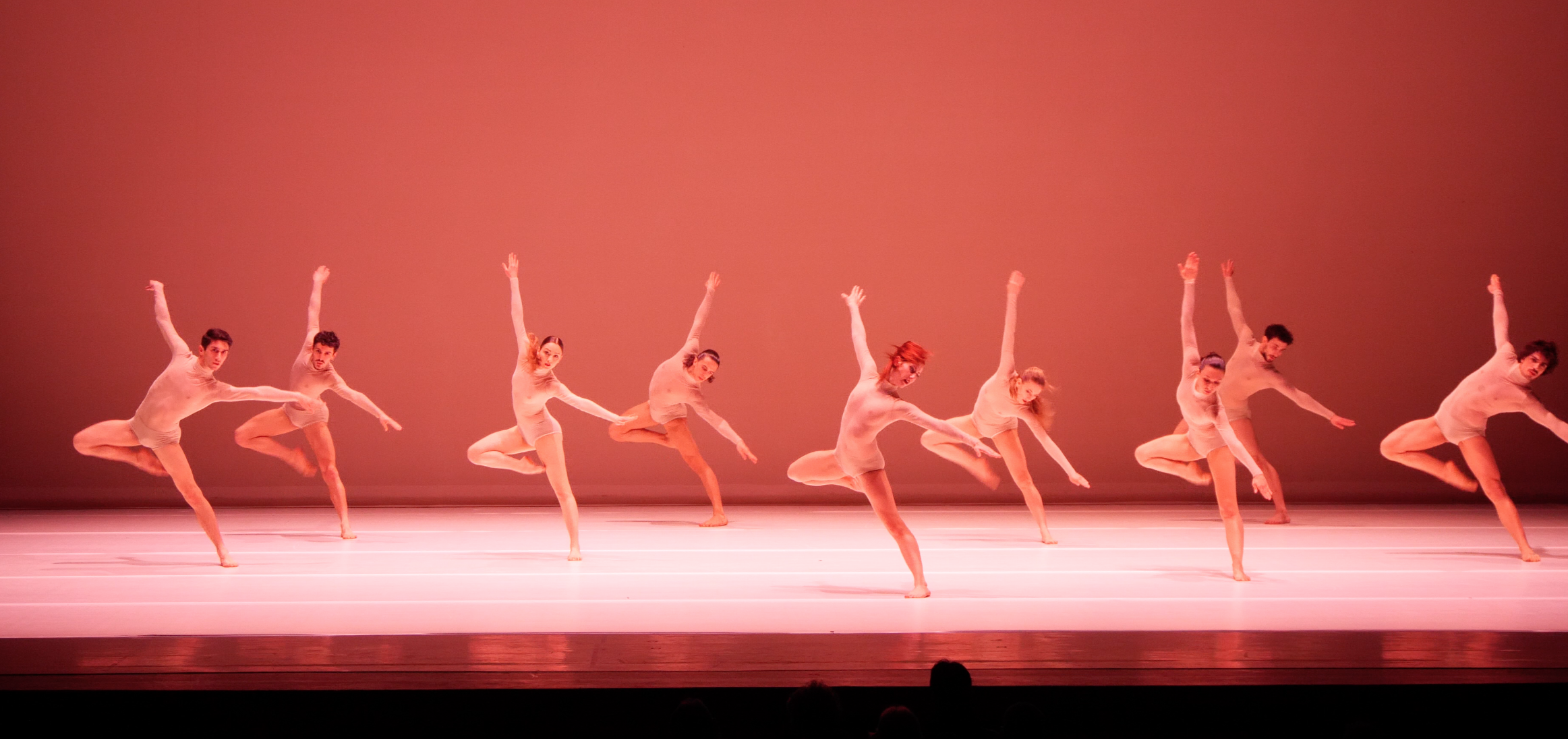
Giselle Balletto die Roma ©Klaus Dilger TANZweb
There Sahar’s first act comes along as less narrative than Haring’s second. His choreography is characterized by repetitive gestures. The hand is patting on the heart, the non-consented kiss is being wiped off, the fist lifted in a rebellious manner. “Giselle“ becomes here a group of bodies that love and hate each other, search and find, approach and separate. At the same time it is a matter of love and betrayal. With all the beautiful and the ugly that emerges in between humans who are able to love and suffer. The musical sonic arrangement of Richard Van Kruysdijk supports this oddly strange effect of the first act where Adam’s famous compositions are broken and blended with loud electronic sounds and grinding noises. The tragedy does not unveil itself in quiet tones reaching its climax in the death of Giselle. Already the first movements and thundering sounds display that the tragic element in the figure of betrayal, sorrow and death is fully present.
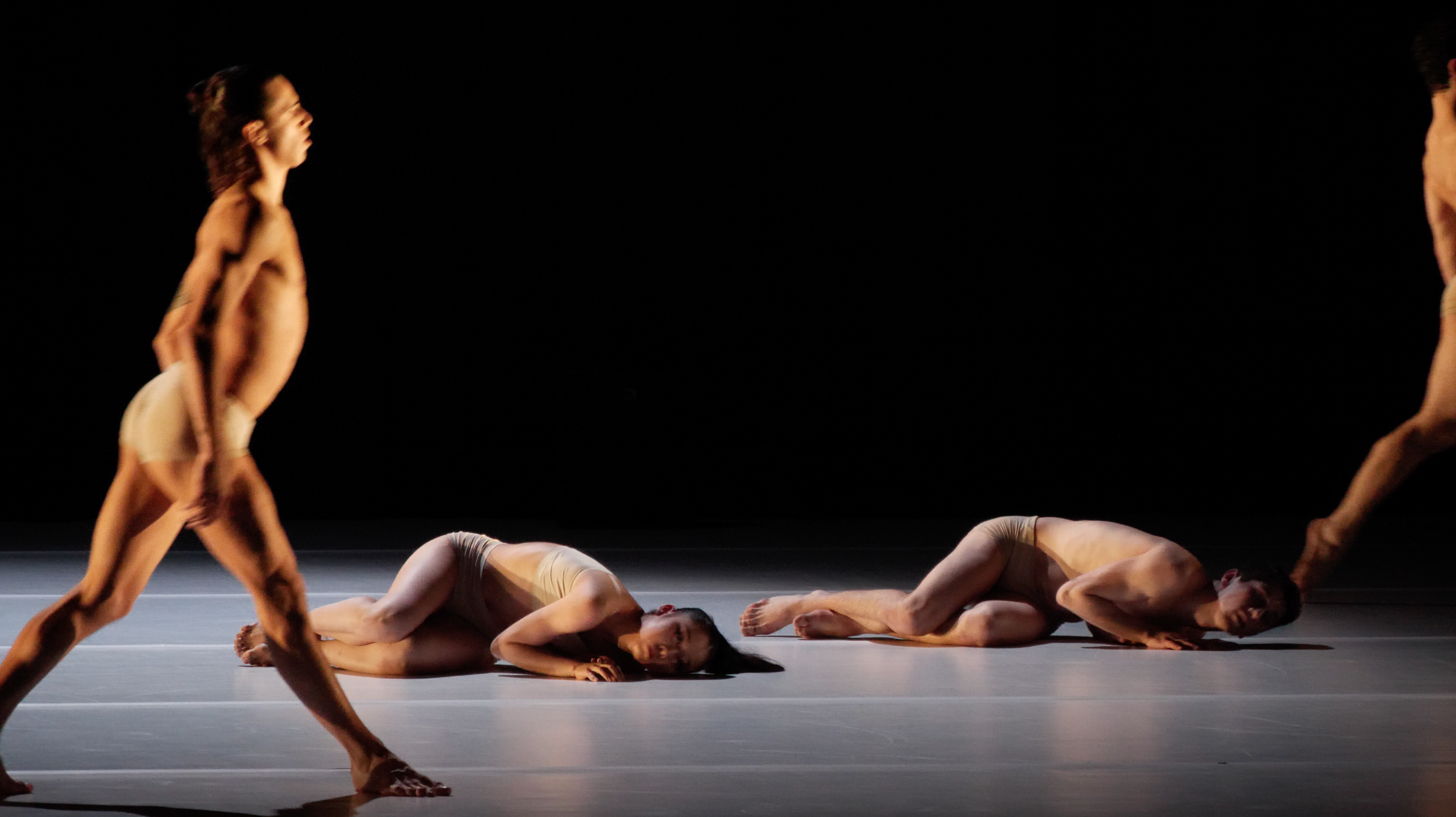

Balletto di Roma “Giselle” TANZweb Klaus Dilger
Chris Haring’s choreography in the second act has a more visually attractive force. He works less in constellations and lets the dancers appear more as individuals. Meetings are scarce. It is sinister, happiness seems lost. Haring attempts to bring on stage the fatal desire for temptation of the Wilis via wavy and creeping figures that are only a shadow of their former self. But because Sahar does not develop the drama in the first act and lets it end tragically towards the break, the second act is worse off and weaker in impact.
The transition of this and the other world does not work. The spectator is missing the chance to connect both acts as every narrative had been removed. The acts stand for themselves. They resemble two puzzle pieces that won’t go together. In lacking a common dramaturgy the evening is like a little Agon. Afterwards it is not the quality of the production being discussed but which act from which choreographer pleased more is the only remaining question. Without a doubt a choreography competition would not have been the aim intended with this Schrit_tmacher experiment.
